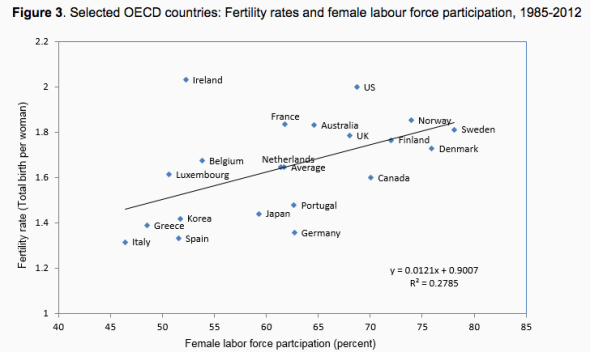Europe’s low birth rates have turned it into an aging continent, which has more than a few people panicking about the region’s economic prospects. As the New York Times reports today, the sense of crisis has grown bad enough that sex educators in Denmark have started talking up the glories of parenthood. “For many, many years, we only talked about safe sex, how to prevent getting pregnant,” the leader of a sex-ed nonprofit told the Times. “Suddenly we just thought, maybe we should actually also tell them about how to get pregnant.” To put it another way, they’re subtly nudging kids to get knocked up. Not necessarily tomorrow. But, you know, when they’re old enough.
As the Times notes, it’s not entirely clear how worried the developed world should be about demographic decline. It’s true that without population growth, economies can’t expand as quickly. As the number of retirees per worker rises, it could also become harder for countries to support their elderly. But between improvements in productivity and looser immigration rules, it may be possible to undo some of the deleterious effects of a graying society.
But let’s assume, for the sake of argument, that Europe’s dearth of babies really is an existential threat to its future. What should countries do? Make sure more women are working, for starters.
That’s less counterintuitive than it sounds. As economists Fang Guo and Yuko Kinoshita have pointed out, women in the industrialized world tend to have more children in countries where they’re more likely to work. In countries with pro-family policies like subsidized day care and paid parental leave, women face less pressure to choose between work and children. And with two incomes instead of one, couples are better able to afford having kids.

A necessary caveat: Some aspects of this graph may be a little outdated, since it averages together a long period of time. In Germany, for instance, the labor force participation rate for women in their prime working years is now higher than in the United States. Yet its birthrate is still one of the lowest in the world, and it’s falling. Employment opportunities aren’t a cultural cure-all.
There is, also, some mixed news for Denmark on this graph. Its women are already much more likely to be in the labor force than in almost any other developed country, which sadly means there isn’t much room for improvement on that front. However, its birthrate also isn’t nearly so bad as Germany’s or Spain’s. Can some awkward-sounding sex-ed classes push it any higher? Of that, well, I’m not so sure.
